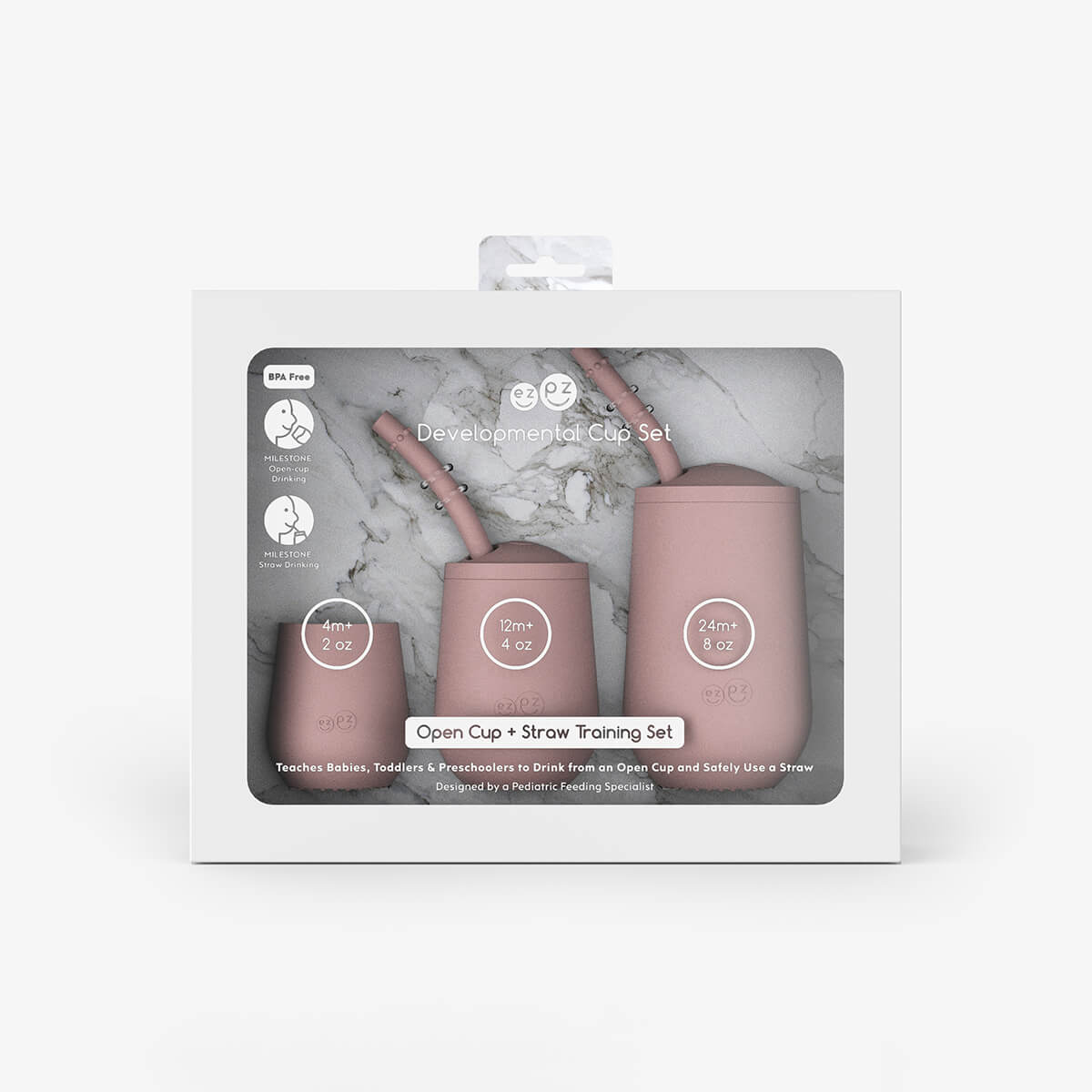As a pediatric feeding specialist and speech language pathologist, I teach parents of babies with Down syndrome to start solids at about 6 months of age (that are showing signs of readiness). I help parents select feeding products + first foods that make mealtime successful and safe. I’m also busting a few feeding myths for feeding babies with Down syndrome.
Texture Myth: Babies with Down syndrome can’t chew foods
Oftentimes I see babies with Down syndrome stuck on purees because their feeding therapists or caregivers don’t realize they can actually chew and eat a variety of food textures (if given the opportunity). Offering foods in different textures, i.e., the baby-led weaning approach, promotes sensory, motor and speech development with all babies, including babies with Down syndrome.
The babies I work with who have Down syndrome are provided with various textures using the BLW approach. In my experience, these babies have appropriate jaw and teeth alignment. This oral motor development is a huge success, as many children with Down syndrome tend to grind their teeth or have chronic dental issues and jaw pain!
- Feeding Tip: Provide a variety of soft and moist food textures in a stick shape about the length and width of an adult pinky finger. This allows baby to learn to chew and swallow while also improving the structural development of the face and teeth.
Medical Myth: Babies with Down syndrome can’t drink from an open cup because of their medical issues
Babies with Down syndrome tend to have more respiratory and congestion issues + ear infections due to having a smaller nasal passage than their peers. In addition, these babies have more tongue thrusting, mouth breathing, gasping and drooling. But this doesn't mean that they can’t learn to drink from an open cup successfully!
Some therapists and caregivers think offering sippy cups may ease medical issues while drinking. Although rare, this is true for some children. But, in most cases, a sippy cup promotes a tongue thrusting position and an open-mouth posture, which may negatively affect a child’s breathing, dentition, sleep and speech development. So, when we are trying to safely feed a baby with Down syndrome, we want to provide the developmental step of an open cup just like their neurotypical peers.
- Feeding Tip: Most parents believe they are supposed to transition their baby from breast or bottle to a sippy cup. Unfortunately, this is false feeding advice. Developmentally, around six months of age a baby should transition from breast / bottle to sips from an open cup held by a parent. An open cup is a cup without a lid, such as the ezpz Tiny Cup. The Tiny Cup is a part of the Developmental Cup Set. Psst... the set offers a discount!
Communication Myth: Babies with Down syndrome can’t communicate until the toddler years
The truth is that babies with Down syndrome have a lot to say at mealtime! And we can help them communicate even more effectively by offering them feeding products that promote speech development. For example, open cup drinking promotes strong lip closure, which is the movement we need to produce the m, p, and b sounds in English, Spanish and many other languages. In addition, straw drinking promotes lip rounding for the w, oh and oo sounds – sounds that contribute to baby’s first words!
Open cup and straw cup drinking also facilitate appropriate tongue elevation for the t and d sounds. It’s no surprise that these speech sounds help produce baby's developing language skills and expressive vocabulary development (mama, papa, bye-bye, water, uh-oh, moon, tummy and dada).
- Feeding Tip: Some babies with Down syndrome verbally respond better when a caregiver models these first words combined with gestures or sign language. Keep an ear and eye out for these adorable communication attempts!
Vision and Fine Motor Myths: Babies with Down syndrome can’t self-feed, so caregivers have to feed them
Some children with Down syndrome have vision and fine motor impairments that may affect mealtime. These challenges can escalate if the child isn’t provided with developmentally appropriate utensils. The ezpz Tiny Spoon is the perfect product to help baby reach their first spoon-feeding milestone. This milestone states that a six-month-old baby will bring their hands to their mouth while holding an object or spoon. Since the Tiny Spoon has a short, fat, round handle (with a non-slip grip) it’s easy for baby to hold on to! Practicing this skill helps baby’s fine motor and visual development. The Tiny Spoons are also part of the Developmental Utensil Set, which includes additional utensils for each age + stage.
- Feeding Tip: Did you know that there aren’t any developmental milestones for fork use with babies? That’s right! From a development and safety standpoint, we should not expect babies to use a fork for self-feeding. Instead, focus on spoon milestones from 6-12 months of age.
Let’s get these babies drinking AND eating in style! Check out the ezpz First Foods Set, a toolkit that includes all the developmental products needed for starting solids safely and successfully. #ezpzfun
















